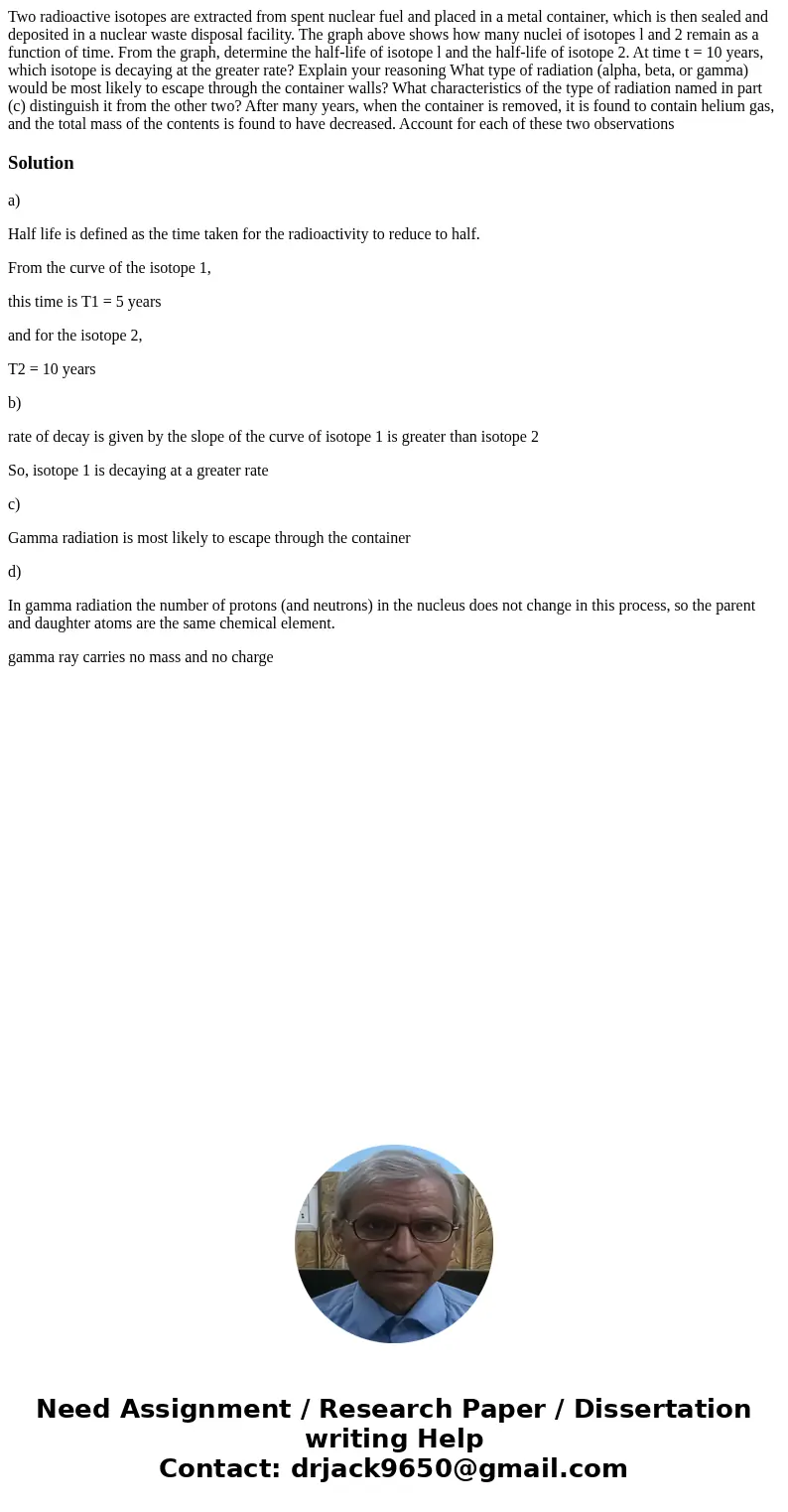Two radioactive isotopes are extracted from spent nuclear fu
Two radioactive isotopes are extracted from spent nuclear fuel and placed in a metal container, which is then sealed and deposited in a nuclear waste disposal facility. The graph above shows how many nuclei of isotopes l and 2 remain as a function of time. From the graph, determine the half-life of isotope l and the half-life of isotope 2. At time t = 10 years, which isotope is decaying at the greater rate? Explain your reasoning What type of radiation (alpha, beta, or gamma) would be most likely to escape through the container walls? What characteristics of the type of radiation named in part (c) distinguish it from the other two? After many years, when the container is removed, it is found to contain helium gas, and the total mass of the contents is found to have decreased. Account for each of these two observations
Solution
a)
Half life is defined as the time taken for the radioactivity to reduce to half.
From the curve of the isotope 1,
this time is T1 = 5 years
and for the isotope 2,
T2 = 10 years
b)
rate of decay is given by the slope of the curve of isotope 1 is greater than isotope 2
So, isotope 1 is decaying at a greater rate
c)
Gamma radiation is most likely to escape through the container
d)
In gamma radiation the number of protons (and neutrons) in the nucleus does not change in this process, so the parent and daughter atoms are the same chemical element.
gamma ray carries no mass and no charge

 Homework Sourse
Homework Sourse